NASA SUITS
What is NASA SUITS?
NASA Spacesuit User Interface Technologies for Students (SUITS) is a software design challenge for college students created by NASA to design user interfaces (UIs) for future space flight needs. As a team, we took a human centered approach to make usable and readable UIs for space flights. The designs were first built on paper, then Figma, and then developed in Unreal Engine. We proposed two designs, a UI for a heads-up display (HUD) and a UI for a virtual rover. Our team, the CosmoShox at Wichita State University, had our proposal accepted by NASA in October of 2024. In December 2024, we were paired by NASA with Columbia University to make an interoperable design. Columbia University was tasked to develop the HUD UI while we were tasked to develop the rover UI. Despite being across the country, we communicated frequently with each other to make sure our designs work together. We built our interface in Unreal Engine using telemetry that NASA provides. The interface was finished and tested by NASA engineers at the Johnson Space Center in mid-May 2025.
TL;DR
• Developed UI for an XR program using Unreal Engine
• Utilized C++ and Blueprint to develop autonomous navigation system and networking capabilities inside the UI
• Designed with multiple features with high attention to detail
• Utilized strong time management skills in a fast-paced work environment
• Acted as product owner for a team of 12 on a technical and complex product.
• Communicated directly with NASA to meet their quality standards
• Collaborated across disciplines to work alongside designers and engineers
• Used Agile Project Management to adapt development and meet NASA demands
The Development Process
My Work as Lead Developer
On top of being team lead, I was also the lead developer on the team. I worked alongside my development/accountability buddy Annastachia Brown to bring our designs to life. Our main challenge was running the Unreal Engine UI alongside a Python server that ran our critical navigation algorithms, a telemetry stream provided by NASA, and a virtual simulation of the moon called DUST. There was a lot of communication back and forth, and our Unreal Engine UI was at the center of it since that is where the user input their commands. We had to develop it in a way that was both intuitive to them and feasible for our team to make.To make our system work, I first built a system that could parse JSON data inside of Unreal Engine. This system took data in from the NASA provided telemetry server, reported when values were outside of nominal ranges (e.g. Oxygen Storage less than 20%), and displayed it to the user in a readable format. These warnings can also be sent out via a server to the HUD that Columbia built.Another system I built was sending commands to a virtual rover inside of DUST. To do this, I had to research into UDP to send commands to DUST. There wasn't a default way to do this in Unreal Engine, so I dug into C++ and made a script that could send all the commands we need. Using this system, we sent commands to DUST to control a rover inside of it. We also used the parsed data from telemetry so that the rover could autonomously navigate between any two points utilizing automatic hazard avoidance.One particular struggle that Annastachia and I had run into was getting a map showing live assets to work. We had to make the map work with both DUST and real-life coordinates! We got stuck early on, and we were unsure how to move forward. Luckily, we had faculty we could reach out to, and they were able to give us some direction and pull us out of the rut we were stuck in. From there, we were able to communicate and develop to get our map working! We both learned some valuable lessons about reaching out and communicating during development.To work on this project, I had to work within many different aspects of development that I had never done before. I had to learn about networking and servers, Unreal Engine UI, and autonomous navigation. I'm grateful for the chance to learn so much, and I'm grateful for the fantastic team I got to grow with.
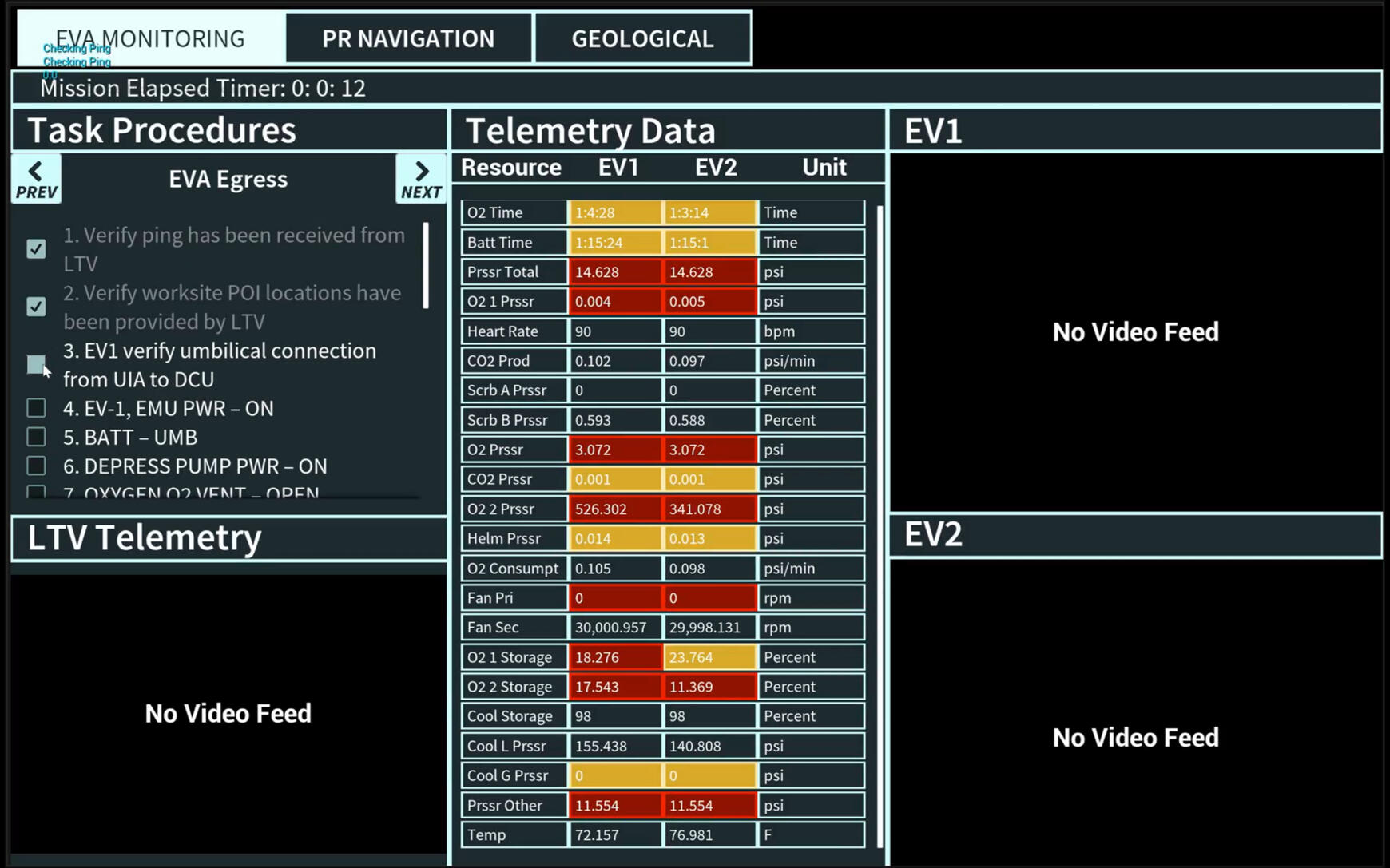
Image of Our EVA Navigation Tab.
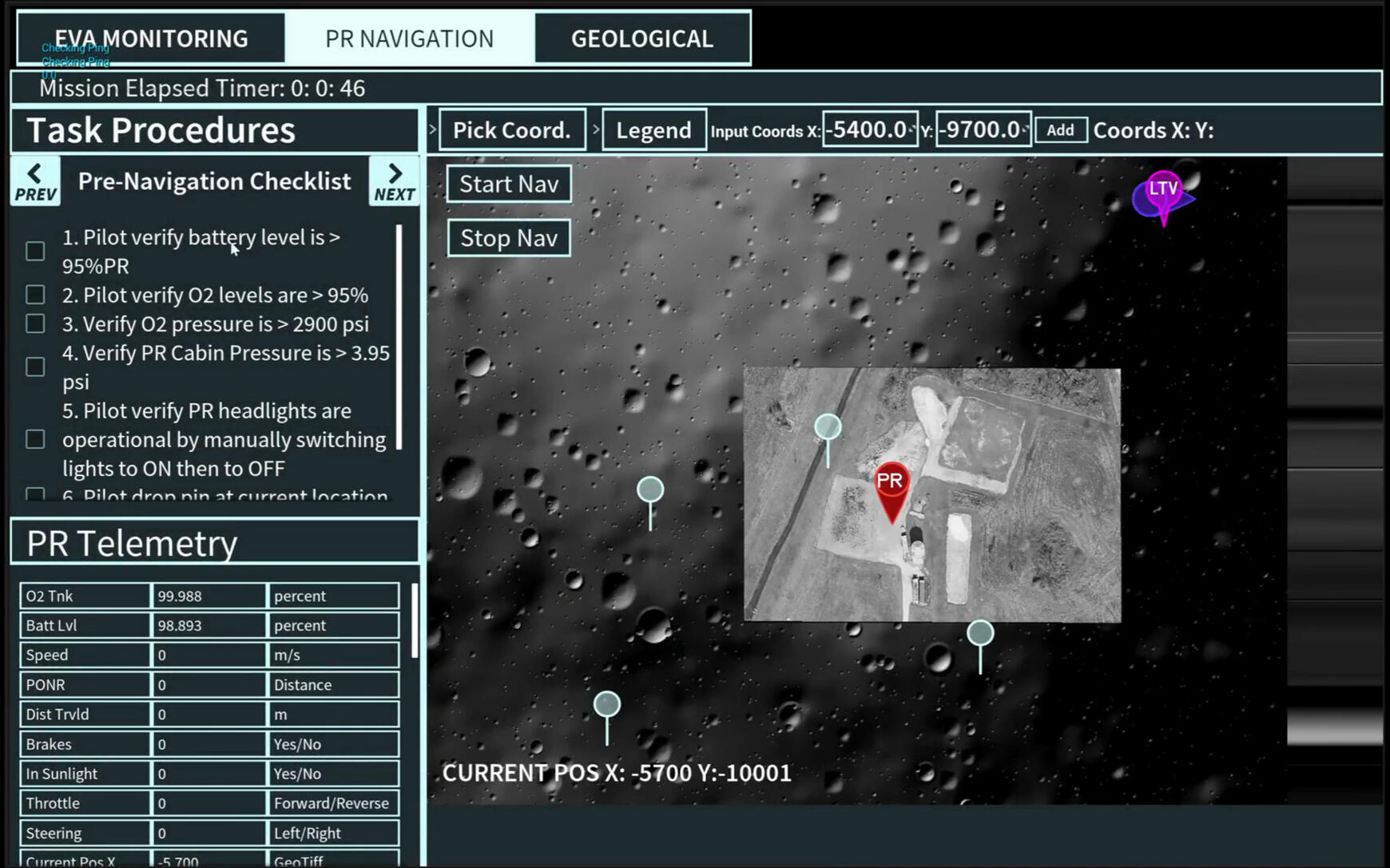
Image of Our PR Navigation Tab.
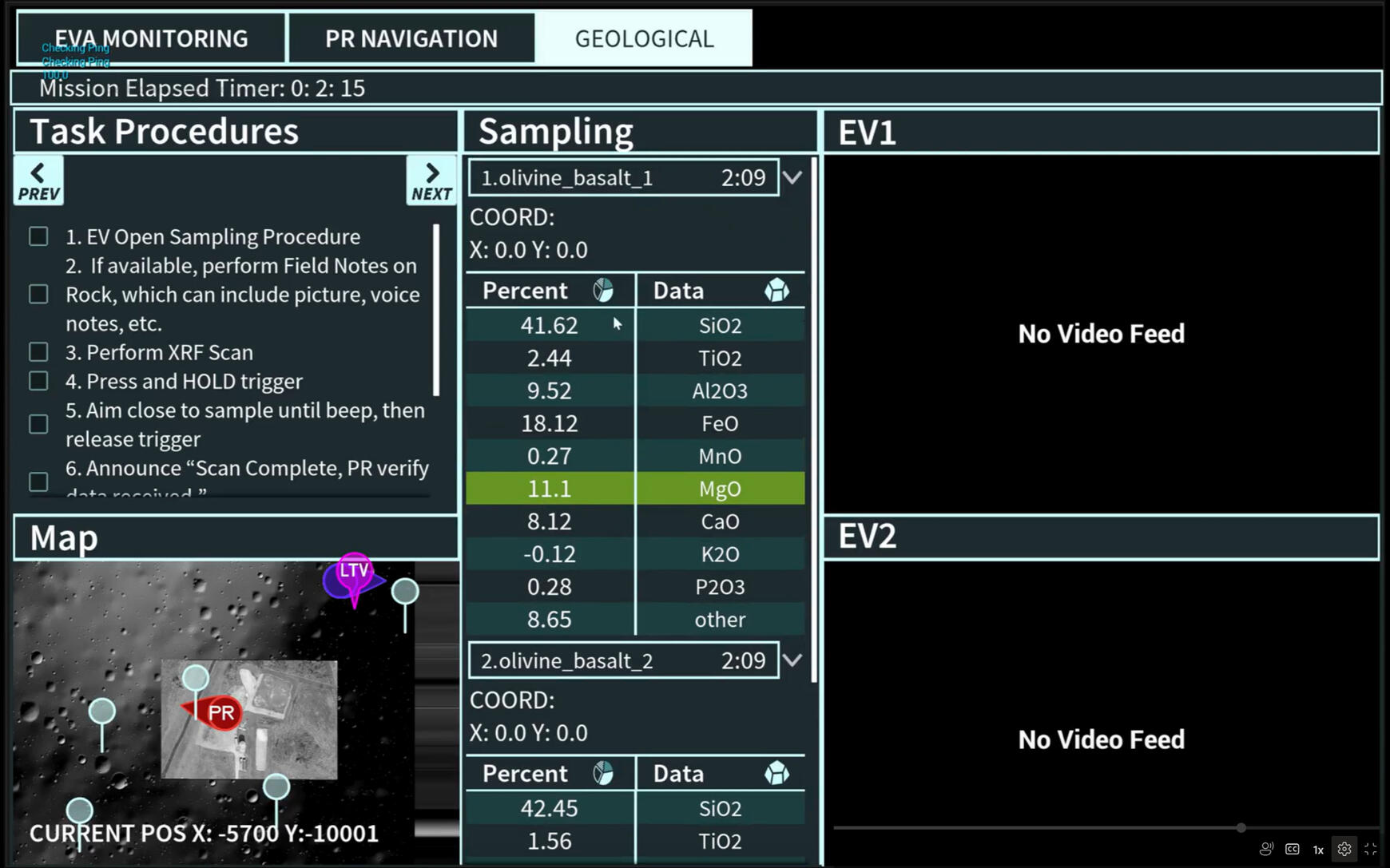
Image of Our Geological Tab.
My Responsibilities as Team Lead
As team lead, I had to wear many hats since a lot of responsibility was put on me to make sure that development was going smoothly. We had 4 sub-teams, an Unreal Engine Team, a Autonomous Navigation Team, a Design Team, and a Human-In-The-Loop Team. Our development time was only 5 months between when our proposal was accepted and our final deadline, so It was my job to make sure that there was constant and healthy communication between all sub-teams and that no bottlenecks were occurring. We used two tools to do this, Agile Product Management and consistent communication.As a team, we used Agile Product Management to organize our development. This way, we could be adaptable and respond to design changes as we developed. We researched and tested as we developed, so it was key to make sure that our development teams could adapt to the new designs. We underwent a lot of formal and informal testing, and we got a lot of useful feedback, so we knew we had to implement it to make our UI the best it could be. Our two-week sprint flow was incredibly useful for this. We could adapt our designs while keeping our development team on track without wasting development time. For example, one trick we'd use is that our design team would be one or two design sprints ahead of our development teams. This way our development teams would always be working on the best, most recent designs with all of feedback applied to it.As team lead, I took role as product owner. This meant I had to take charge of the product and oversee development. We utilized a kanban board to track development. Anyone could glance at the board and immediately see what everyone else was working on, so I frequently kept it up to date. This was one of the most crucial parts of our communication. This enabled Transparency which was one of our greatest strengths as a team. We kept track of both a physical and digital Kanban board. I also had to make sure that our sprint goal was relevant to the entire team and that everyone was working on what they were assigned. This way all of the separate teams could know what the others were working on.Overtime, my leadership style evolved to meet the requirements of the project and the personality of the team. I also grew a lot as a team lead over the course of SUITS. At the start of the project, I would just assign tasks to my teammates with little explanation. I figured I could just build on top of their first draft. This lead to issues where our designer or developer wouldn't know what they should be doing and they could head in the wrong direction. So, over time I realized that communication was absolutely essential in the beginning phases of design and development. Communication allowed us to be on the same page before any work got done so that everyone was immediately producing something towards the final project. This ensured that no time was wasted and everyone felt confident about what was getting done. So, one trick I implemented was that I'd always have a one-on-one conversation with everyone on the team after sprint retrospectives. I'd ask how they were feeling about what they were assigned, and I would make sure that we were both on the same page about what they were working on in the future. I was very influenced by leaders like Satoru Iwata and Micheal Morhaime. I think their open policies allowed their teams to be as strong as they were.With all of these tools in hand, our team was able to communicate and understand what everyone else was working on. This way, we would never overwrite or nullify each other's work. It was a crucial part of our flow and a major part of my responsibilities as team lead. Communicating with every CosmoShox member has been my favorite part of development by far.
Images of me working with the team.
Images of our physical and virtual Kanban boards.
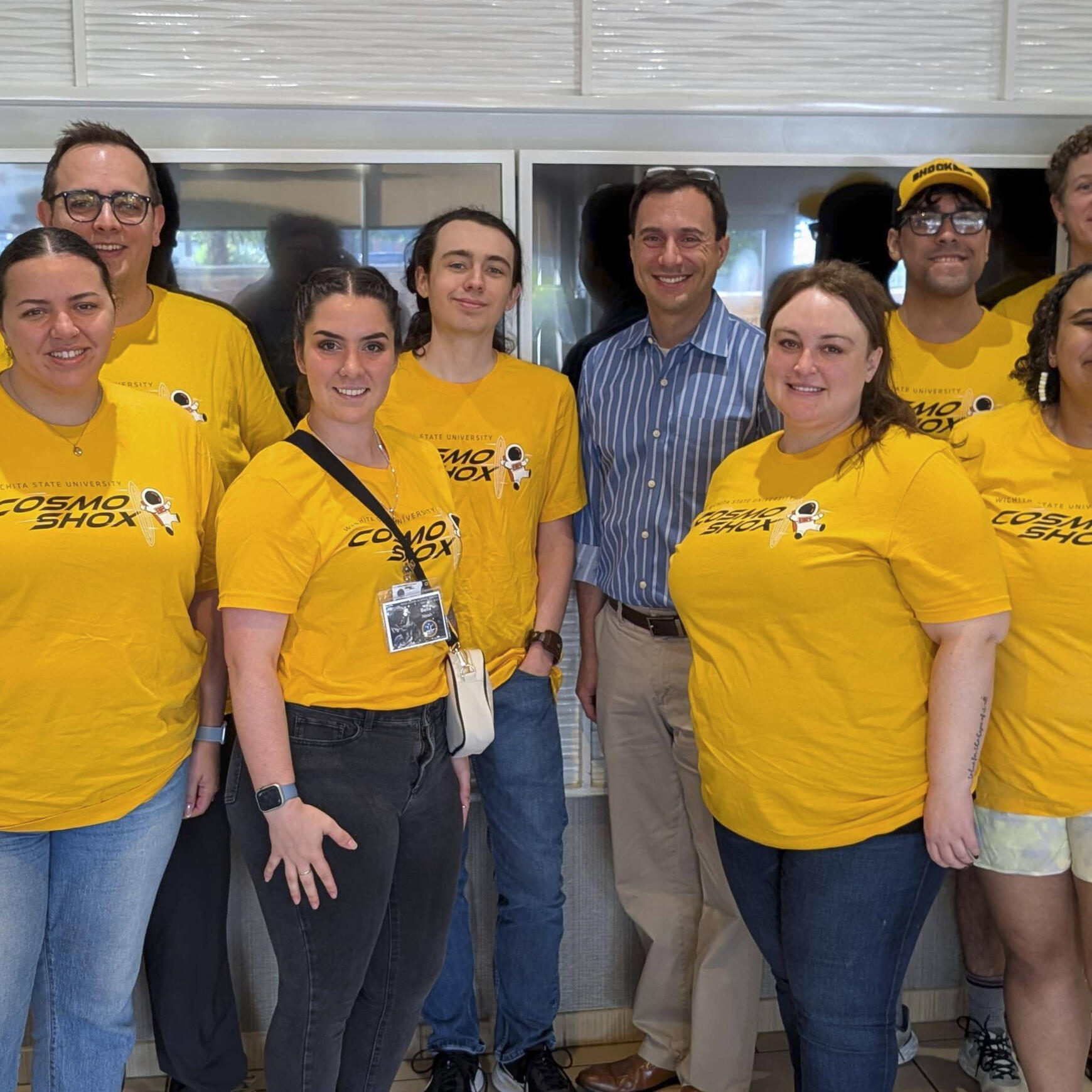
Image of The Team with Our NASA Mentor Alex Kanelakos (in blue)
Working as a team
NASA SUITS is a multidisciplinary project. Not only are we working with another college, Columbia University, we are also a multi-disciplinary team composed of more than just engineers and designers. Our team is so varied that we had a representative from eight of the nine different colleges at Wichita State University. Our widespread experiences became one of the core strength of our team. We pooled our knowledge from many different sources to make a high-quality and well-rounded design. However, our widespread base meant that we had to communicate deliberately and clearly with each other so that we'd all be on an equal level of understanding. As a team, we worked together to make the best possible design that provided all of the essential data that an astronaut could use while not overloading them with information.As a game designer, I consider myself as in between a designer and an engineer. I believe that video games are an art and a science, after all. My experiences meant that I’ve already developed a lot of both the languages of design and engineering. I found I was able to comfortably communicate with both designers and engineers, so when it came time to elect a team lead for the CosmoShox, I volunteered. Being team lead meant that I had to oversee a lot of the proposal and development process. I delegated roles to team members based on their strengths, and I filled in crucial gaps where I could. I took the feedback we received on the proposal to heart, and I communicated to the rest of the team what needed to be done to apply that feedback. I took on a lot of responsibility as team lead, and I did my best to live up to my team member’s expectations.
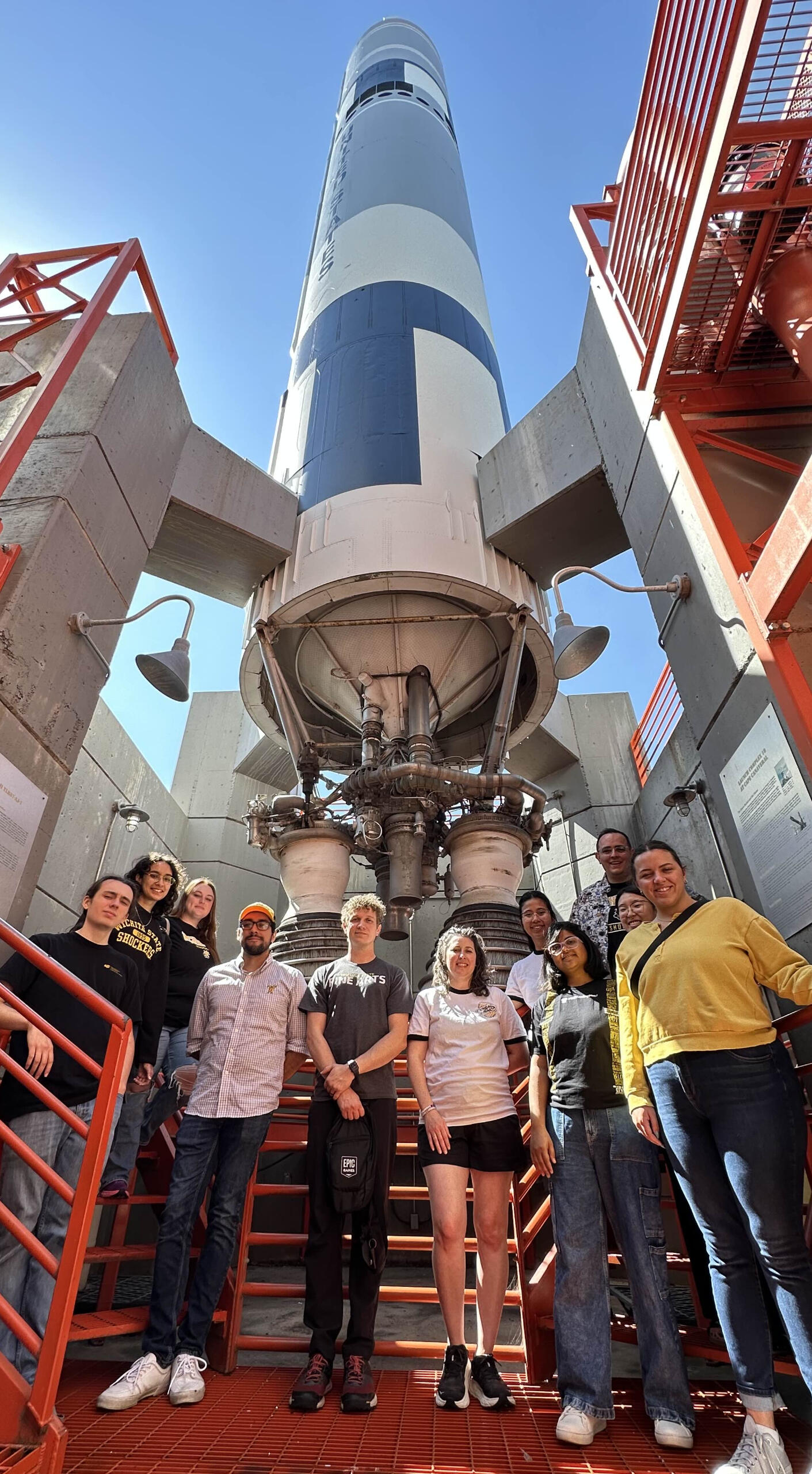
Image of our NASA SUITS Team, CosmoShox at the Cosmosphere in Hutchinson, KS.
Me on far left.
The Proposal Process
The Journey Map
As a team, before we put anything down on paper, we had to understand how our user interfaces were going to be used. To do this, we made a journey map. The journey map outlined how our HUD would be used on an extravehicular activity (EVA). This gave us the perspective of our users, and it informed the rest of our design. Instead of asking, “What do we need to make?” We started to ask ourselves, “What would we want our UIs to do for us?” This perspective prepared us for designing UIs with a human oriented approach.For instance, through our journey map, we discovered that we wanted astronauts to interact with our designs through voice command. This way, they could use their hands freely. We also found that eye tracking technology would be impaired by solar conditions on the lunar south pole. The journey map informed our decision and helped us discover what we wanted to do. Once we had solidified our goals, we started drafting our designs.
Images of our Journey Map.
The Design
After discovering what we wanted our designs to do, we dug into researching our designs. This way, our design decisions were informed, and we could back up the deliberate decisions we made. We looked into design theory and cognitive load theory, and we looked at the technology we were using. I looked into how we would use our designs with Unreal Engine. I checked that the ideas we were proposing were feasible by digging into Epic Games’ documentation, and learning everything I could when it came to working with AR in Unreal Engine. Once our research was complete, we were ready to start developing our designs.Like making a thumbnail before a painting, we made sketches of our designs on paper before our experienced designers implemented them into Figma. Our team, both designers and engineers, met together at coffee shops and started sketching out exactly what we wanted to make. After sketching, we’d discuss what worked and what didn’t. Then, we’d start sketching again. This rapid iterative approach allowed us to test ideas fast and hammer out a design that everyone was happy with, across all of our disciplines. Once our designs were solidified, we were ready to finish our proposal.
Sketches of our HUD designs and our rover designs.
Sketches by John Mulnix and Me.
The Proposal
When it came time to finish our proposal, we were prepared with our perspective set, our research done, and our designs finalized. Our proposal was about putting our work into words. We split up the work according to our roles and worked together to get everything done. We would meet weekly to double check each other’s work to make sure quality was consistent. Whenever we finished a draft, we sent our work to our faculty advisors for feedback.Feedback was critical to the proposal process. It allowed us to see our work from a new, experienced perspective, and it empowered us to adapt our work into something better for it. In a project like this, it’s easy to lose track of what’s most important. Feedback was the key that kept us innovative without letting us go astray. Every time we received our feedback, we rewrote what didn’t work and strengthened what did. We repeated this process multiple times until turn in day on October 31st. After a long month of waiting, on December 6th, we finally heard back from NASA that our proposal was accepted!
Figma designs done by Shaybree Haynes, Janis Hwang, and Jude Khaldi.
TEST WEEK at the Johnson Space Center
At the end of the NASA SUITS process, we were able to test our design at the Johnson Space Center (JSC). To recreate the conditions at the Lunar South Pole, we tested our designs at night. We had two sessions with a unique evaluator with a us. After using both designs, they provided us valuable feedback that we immediately applied to our designs. For example, we were told by our first evaluator that she had a hard time finding crucial assets related to the procedures. So, our team was able to take that feedback into account, restructure our data table, and apply the feedback before the next test. Our team was very happy to hear from both our design evaluators that our designs were intuitive to use!

Image of Us Initially Showing Our Design with Our Mentor and Evaluator Alex Kanelakos.
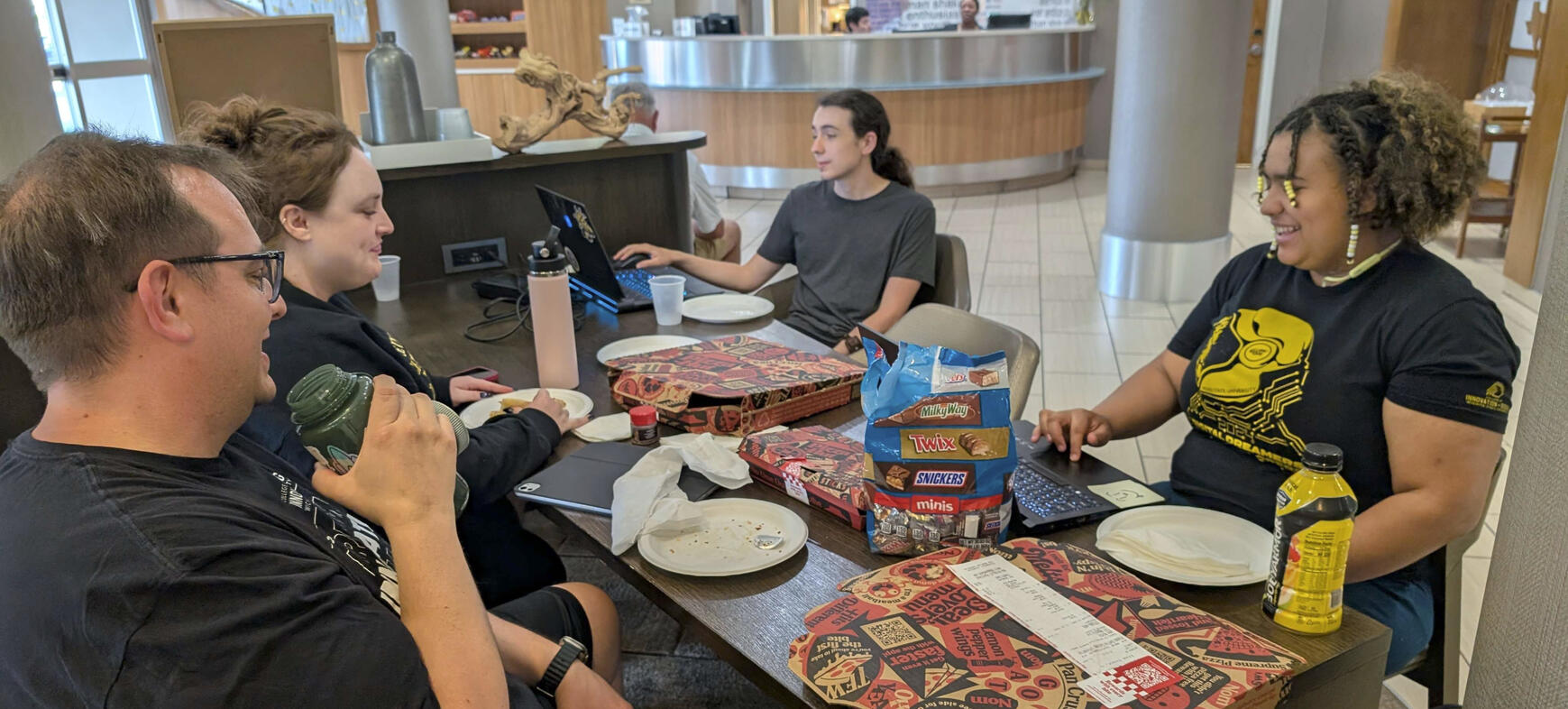
Image of Us Applying Final Design Touch Ups Before our Next Test The Following Night.
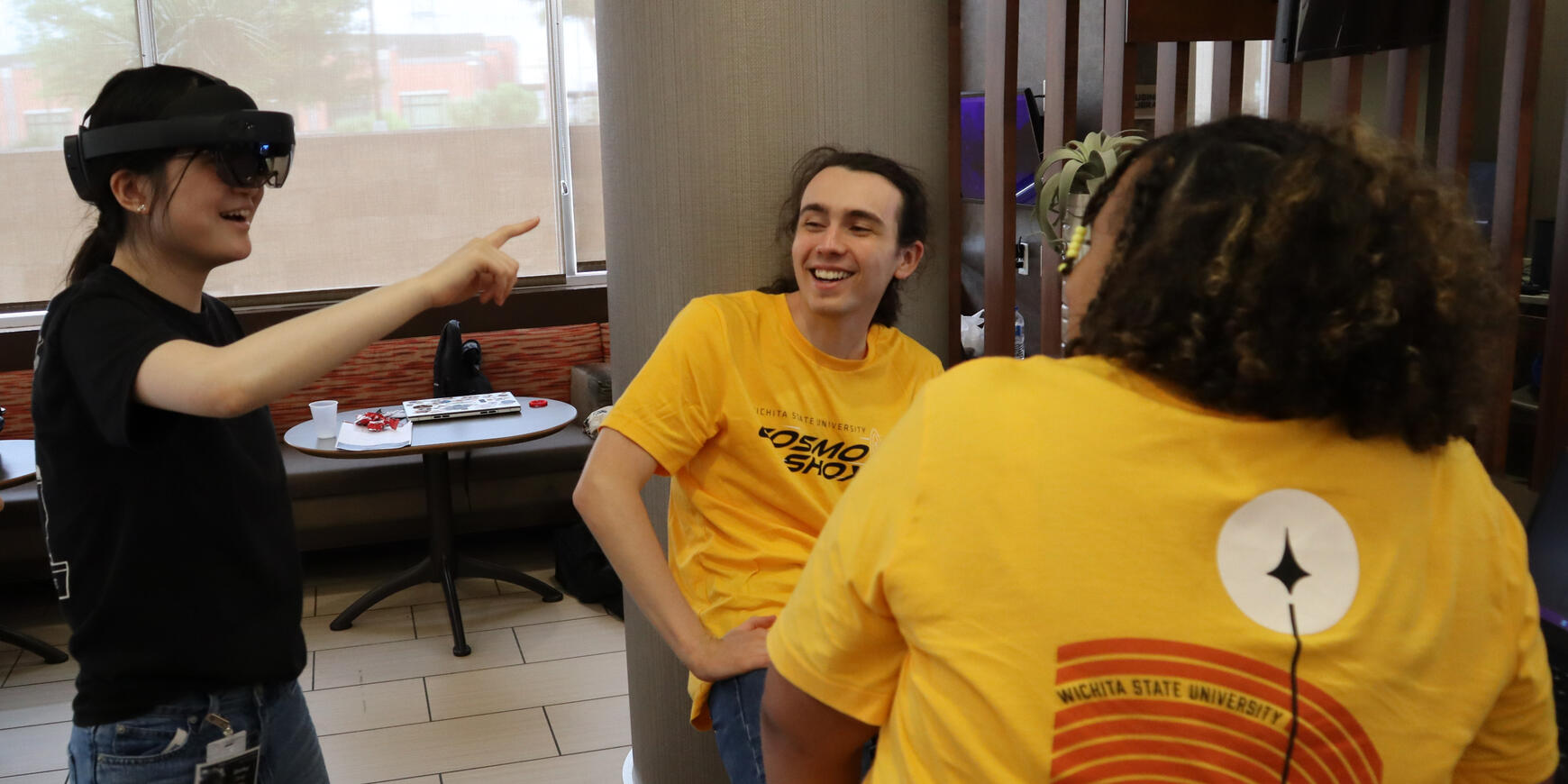
Image of Us Working with Our Fellow Team Columbia.